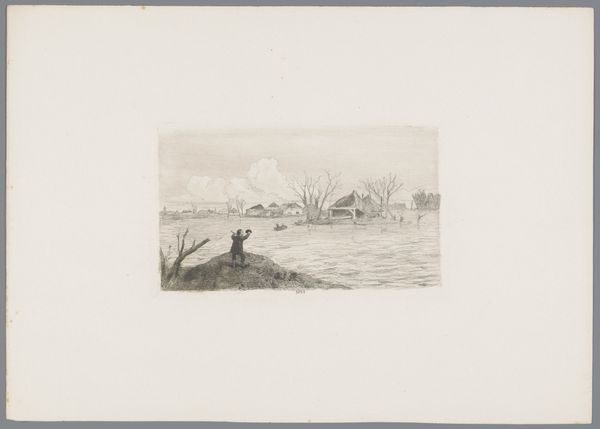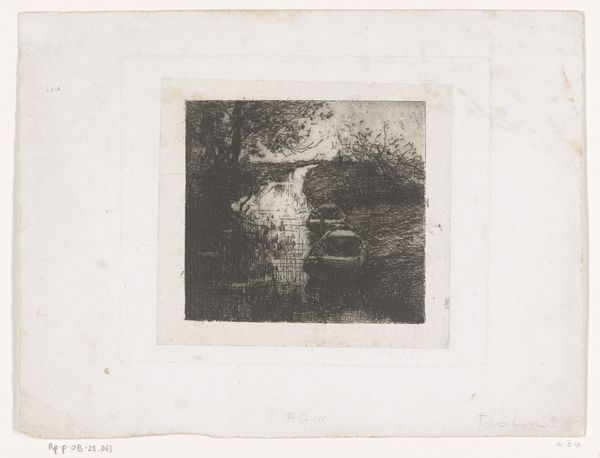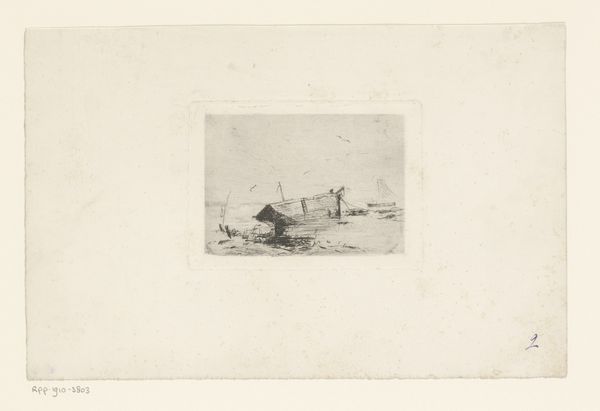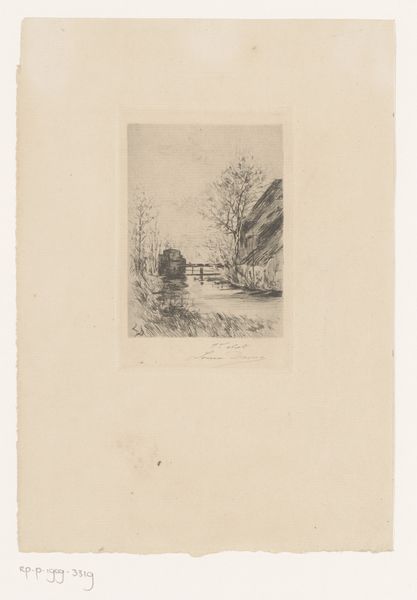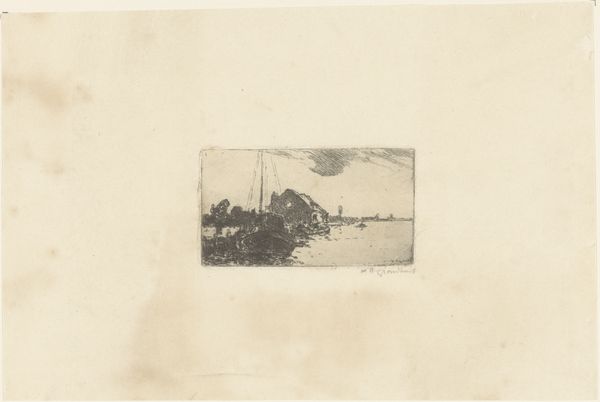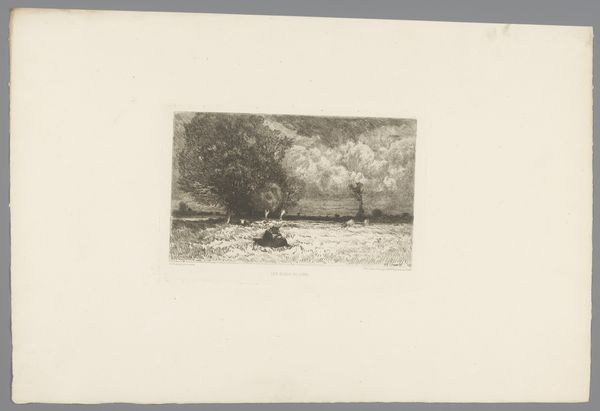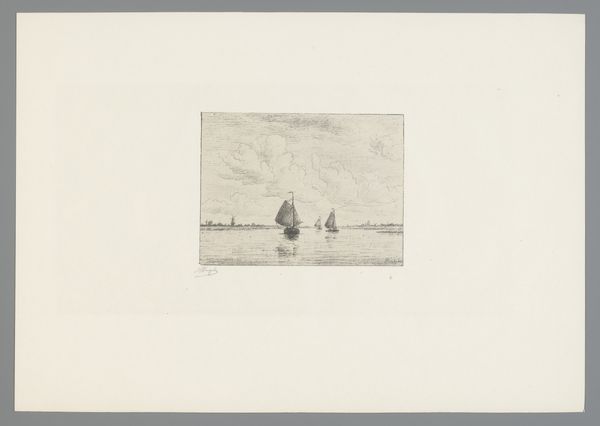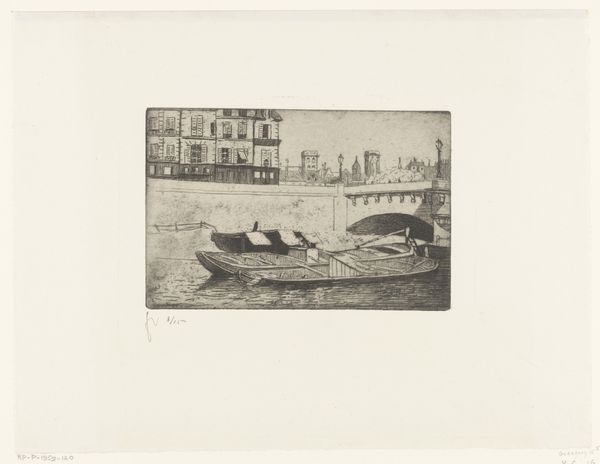
drawing, print, etching, plein-air, ink
#
drawing
# print
#
etching
#
plein-air
#
landscape
#
ink
#
watercolour illustration
Dimensions: height 128 mm, width 198 mm
Copyright: Rijks Museum: Open Domain
Curator: Emile de Baré's "Nachtgezicht op een rivier," or "Night View of a River," made between 1865 and 1902, captures a tranquil waterside scene. Editor: There’s a real stillness in this image. The monochromatic palette and the soft etching technique lend it a quiet, almost melancholic mood. Curator: Considering the likely plein-air method of the piece, let’s think about the culture in which artists, mainly male, positioned themselves to witness the "authentic" or natural settings removed from social or political chaos. How does the "authenticity" intersect with contemporary class dynamics? Editor: Right, and how accessible was this landscape for those caught in the cogs of industrial labour? The etcher’s tools and materials allowed him to represent a scene reflective of a specific socio-economic perspective. Were laborers invited in its making? I doubt it. The scene feels very curated for particular eyes. Curator: And within that curatorial impulse, notice how the composition frames a specific vision of nocturnal peace. There’s a conscious positioning here: the placement of those soft watercolor illustrations of lighted posts; that strategic placement of the barely noticeable windmill off in the distance. Editor: I’m particularly drawn to the ink itself. The etching process reveals labor, the controlled, almost meditative repetition required. Curator: That laborious technique highlights the artist's mastery, while also echoing the tireless industrial machinery that would have dominated urban existence at the time. De Baré has chosen here, instead, to focus on the absence of such clamor and mark-making. Editor: What about the role of this print's reproduction, though? An etching such as this could find wider consumption than a unique watercolor illustration and therefore extend de Bare’s intended viewing context further than perhaps he could have at all dreamed. Curator: Exactly! So, we're looking at how representations of landscapes are made, and whom they are intended to serve both socially and ideologically. Editor: Absolutely, and understanding the materials, process and mode of reproduction informs that critique, highlighting what gets prioritized and whose perspective dominates. Curator: Considering how it intersects with both the historical and the contemporary gives such potency to de Baré’s piece. Editor: Indeed, I came here hoping to see an ethereal moment; I leave considering who *gets* that ethereal moment.
Comments
No comments
Be the first to comment and join the conversation on the ultimate creative platform.


